Code.org 2020 Annual Report
Letter from Hadi
Computer science amid a global pandemic
In 2020, we witnessed a global feat of agility and perseverance as our lives were turned upside down by the pandemic. In the education community, we saw educators all around the world rise to the unprecedented challenge of sweeping school closures and the limitations of remote teaching.
The determination of teachers to keep students learning was Code.org’s inspiration as we pivoted to support them in the new world of distance learning. On March 9, two days before the World Health Organization declared COVID-19 a pandemic, there were already 13 country-wide school closures. Within a week, there were 109 country-wide closures and 44% of the world’s enrolled learners found themselves struggling to learn at home. During that same week, Code.org concentrated our efforts to rapidly create a set of resources for learning at home, and we launched a weekly series of live-interactive online lessons to reach students whose schools were closed for the year. By the end of March, 82.8% of total enrolled learners were impacted by school closures.
COVID-19 was not the only calamity to erupt in 2020. Horrific images of injustices against Black Americans put a much-needed spotlight on racial inequity in the US. Like many other organizations across the country, Code.org reflected deeply on how our work could go further to address racial inequity. We made a commitment and a plan to better serve our Black employees, students, and teachers. As we took immediate action, we pledged to continue to evolve and execute on that plan.
As the world works to heal, one thing is certain: computer science is more important than ever.
With the world’s population in isolation, technology enabled businesses to operate, students to learn, and people to connect. Technology helped scientists devise novel mRNA-based vaccines. And, in our continued discussions about ethics in computer science, we saw how technology can either exacerbate or address social inequities.
As the economy becomes increasingly digital, and as a growing “remote first” mindset enables people to participate in the digital revolution from almost anywhere, every student, not just a select few, should have a chance to take part in creating the technology that shapes our world.
During 2020, as schools closed or transitioned to online learning, we saw the digital divide widen, increasing gaps that already existed based on income, gender, race, or geography. As schools reopen, we must redouble our efforts to close gaps in representation, and it is more critical than ever that every student in every school has the opportunity to learn computer science.
2020 Highlights
We rapidly responded to school closures and Covid-19 with distance learning resources ➤
As many schools closed their doors to in-person instruction in March, we made significant curriculum modifications to support distance learning across all of our courses and launched new initiatives and resources to support parents, teachers, and students as they navigated at home learning. In particular, we’re incredibly proud of Code Break, a series of streamed interactive lessons with special guests that engaged tens of thousands of students of all ages worldwide with CS concepts and activities.
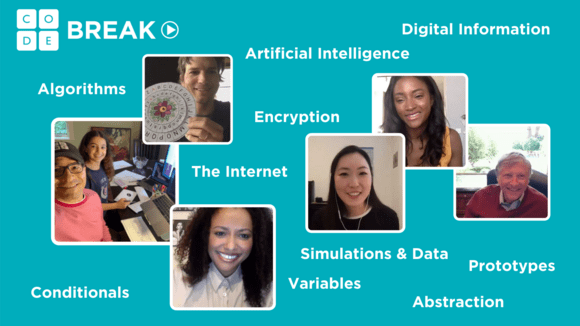
Now that our school is closed and we are on distance learning mode, we had no trouble as they were already used to Code.org. I can easily track their practices and provide them with timely feedback. Most importantly, they are motivated and feel excited when they are able to see their products. They see no limitations and that is something that I am very thankful for.
— CS Discoveries Teacher
We shared research that shows computer science develops foundational learning skills ➤
Seven different studies show: children who study computer science perform better in other subjects, excel at problem-solving, and are more likely to attend college. In April 2020 we released a 4-year longitudinal study conducted by West Coast Analytics, in which researchers found that in two large US school districts, high school students who took computer science were 17% more likely to enroll in college versus similarly-situated students who do not.
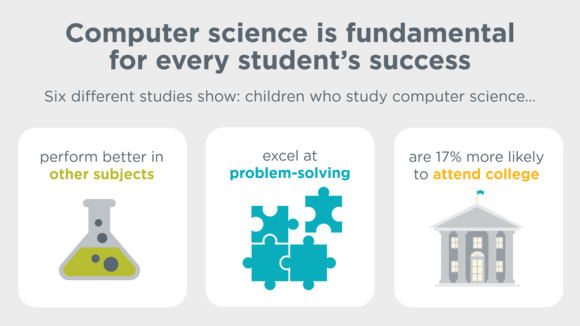
We launched an all-new CS Principles and released other course and platform updates ➤
In June, we launched an all-new CS Principles curriculum endorsed by the College Board that encourages more creativity, more advanced programming and a focus on ethics. We also released revised CS Discoveries and CS Fundamentals courses.
In CS Discoveries, we updated our programming units to include Choice Levels, allowing students to explore different pathways and projects as they completed the curriculum and broadening student creativity.
We updated the CS Fundamentals curriculum with cross-curricular standards and new projects to empower student creativity. We also renewed our partnership with Common Sense Education in order to provide updated lessons on Digital Citizenship.
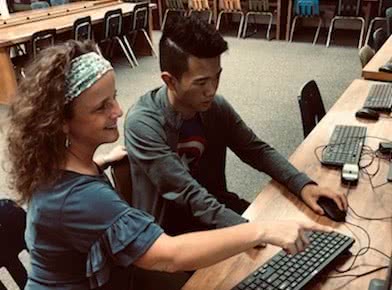
“I have a new appreciation for computer science because of this program. I also know students whose whole career path has shifted because they found CS and found they had a passion for it (and are good at it too!)”
— Kerry Seip, Pleasant View Middle School, Colorado
We took our workshops online and prepared over 4,200 educators to teach CS ➤
With the growing concern of COVID-19, safety became our top priority and we transitioned our Code.org Professional Learning Program workshops for middle and high school teachers to a virtual format for 2020. This allowed over 600 facilitators and over 3,000 new computer science teachers to take part and prepared to teach CS in the 2020-2021 school year.
“Really great experience! Amazing, super supportive instructors and really well-prepared, thought out learning experiences. Very valuable professional development!”
— Julie Effertz, Curtin Elementary, Wisconsin
We collected CS course offering data from 100% of US public high schools ➤
2 years after launch, our CS Access Report finally has data on 100% of U.S. public high schools. As a result, we were able to include data from all 50 states in our 2020 State of CS Report, which reflects growth in CS adoption but still shows that less than half of US schools teach CS. We released this 4th annual report at our largest State Policy Forum (~1000 participants) in October.
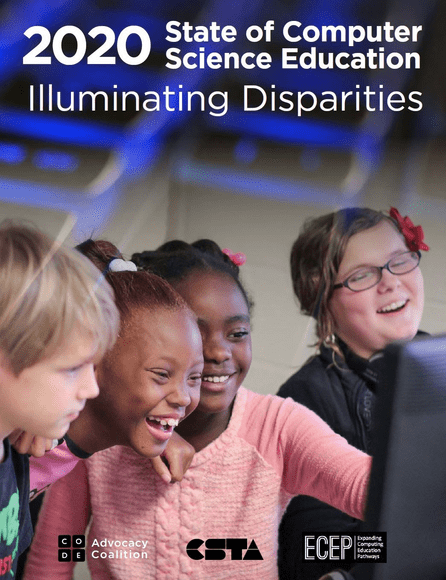
We delved deeper into the disparities in access to computer science to focus our efforts ➤
While we have much left to do to create an equitable learning environment for our students, we are still proud of the strides we made in 2020 such as launching our BEST plan, which aims to better support our Black employees, students, and teachers; disaggregating demographic data by race and gender to uncover specific disparities; and adopting a major language change related to students from racial/ethnic and other groups, moving away from the use of “minority,” shown to be offensive.
We also integrated Microsoft Immersive Reader into curriculum instructions space to improve accessibility on the Code.org platform, and moved our CS Fundamentals course and all of Code.org’s Hour of Code tutorials to be 100% localized into 8 languages.
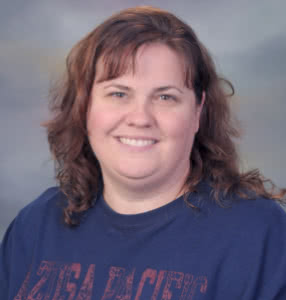
“I am so glad I chose to lead this movement at my school. I would like more students to take the class. It is so fun to teach and learn with the CS Education community. I love that the focus has always been access and equity for all students.”
— Erin Duran, San Pasqual High, California
We worked with states to pass CS initiatives totaling $57 Million in 2020 ➤
Despite shortened and suspended legislative sessions due to COVID-19 in 2020, states still recognized the importance of computer science education, perhaps now more than ever with renewed attention on the “digital divide” and the economic opportunities afforded through computer science. States allocated a combined $57 million toward K-12 computer science education efforts, created statewide plans to expand access, and enacted legislation requiring all schools to offer computer science. To date, all 50 states have enacted policies to make CS a foundational part of their K-12 education system.
We introduced a new initiative to incorporate Artificial Intelligence into our curriculum ➤
In partnership with Microsoft, Code.org launched a comprehensive approach to bring AI lessons into the classroom, from elementary school through high school. Launched in December, the AI initiative began with a new AI resources page, a new video series on AI, featuring Microsoft CEO Satya Nadella along with leading technologists across industry and academia, a global launch of Code.org’s hit AI tutorial, AI for Oceans, available in 25+ languages and optimized for mobile devices, a classroom lesson plan to help students explore and discuss the societal and ethical implications of AI, a lesson in the CS Principles curriculum about machine learning and bias.
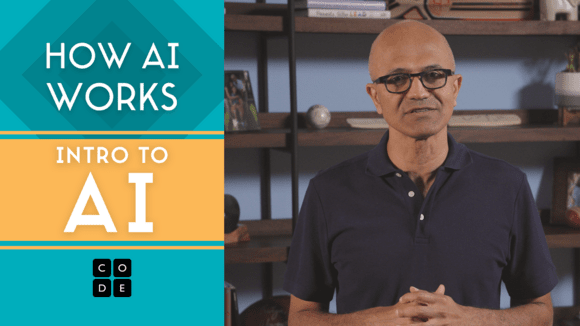
We took on a different spin on our biggest CS celebration of the year in the Hour of Code ➤
With the rapid transition to at-home learning in March of 2020, we expanded our resources to meet the different needs of all students for Hour of Code. In addition to our library of How-To Guides, we also created a printable Hour of Code Unplugged Activity Packet for ages 4–18 so that students using limited technology at home can still participate. This year’s theme, #CSforGood, encompasses how technology can keep us connected in a challenging year, and how we must ensure access so no one is excluded from the opportunity to learn.
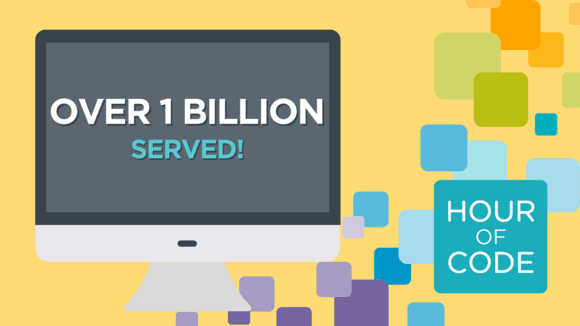
Also new this year, CodeBytes give students the opportunity to tune in for 20-minute lessons with computers, tablets, or smartphones to learn about various CS topics with Code.org staff.
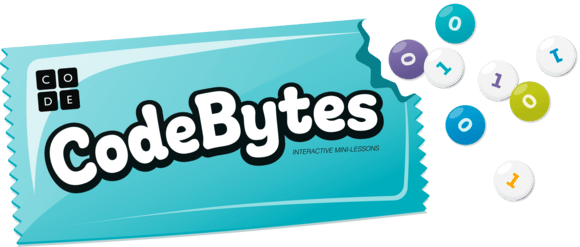
“I was very pleased that the Hour of Code activities were provided this year. It gave the students something to look forward to during a very ‘different’ school year. Thank you.”
—Elementary school teacher in Michigan
We localized our core content to broaden opportunities for international students ➤
In 2020, Code.org increased investments in localizing our core content to 18 widely spoken languages—and, CS Fundamentals and all Code.org Hour of Code tutorials are now 100% localized to 8 languages. With these efforts, traffic to the Code.org website by non-US users increased to 49% of total pageviews and non-US usage of all Code.org courses grew to 53%.
In response to the impact of the global pandemic in schools, we shifted to broader regional initiatives to generate demand for CS, such as Hora del Código En Vivo, Africa Code Week App, and increasing non-English songs in Dance Party.
We partnered with local, regional, and global organizations to amplify our impact ➤
We onboarded ten new partners and explored new types of partnerships with multilateral organizations (World Bank, Inter-American Development Bank, UNESCO), regional and global nonprofits (JA Worldwide, Trust for the Americas, Dubai Future Foundation), corporations (Telefónica, Atlassian, Finastra), and pop culture entities (Miami Art House, Jaffna Stallions).
To promote systems change with support from local partners, we worked with ministries of education in at least a dozen countries to include CS in the national curriculum. Finally, we collaborated with the Organisation for Economic Co-operation and Development (OECD) to include computational thinking in the Programme for International Student Assessment (PISA) 2022 and with the Brookings Institution on their global CS education report to be released in late 2021.
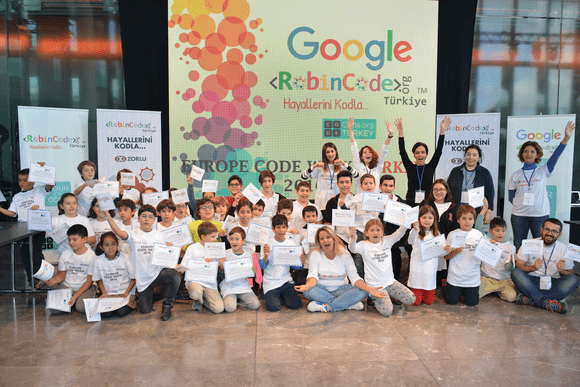
An Hour of Code activity organized by our Turkish partner Robin Code. Turkey has the second-most Code.org users in the world, after the United States.
Code.org by the Numbers
| Schools, states, countries | 2020 |
|---|---|
| US High Schools teaching CS (Data from the Access Report) 2025 Goal: 80% of all HS teach CS |
47% |
| US Students passing the AP CS exams 2025 Goal: 350,000 |
187,331 |
| States that have established an “all schools must offer CS” policy OR a state CS plans + CS funding 2025 Goal: 50 |
25 |
| 70 countries have established plans for CS 2025 Goal: 70 |
53 |
| Code.org Platform | 2020 |
| Student accounts [all-time] on Code.org 2025 Goal: 100M |
55,000,000 |
| % of accounts from female students 2025 Goal: 47% |
45% |
| Student accounts [all-time] on Code.org from outside the US 2025 Goal: 60M |
20,254,278 |
| CS Principles | |
| Students that have started Code.org CS Principles course in the academic year 2025 Goal: 400k |
239,878 |
| Female students that have started Code.org CS Principles course in the academic year 2025 Goal: 160k (40%) |
81,037 (34%) |
| Students from underrepresented racial and ethnic groups* that have started Code.org CS Principles course in the academic year 2025 Goal: 172k (43%) |
101,618 (43%) |
| CS Discoveries | |
| Students that have started Code.org CS Discoveries course in the academic year 2025 Goal: 2M |
732,924 |
| Female students that have started Code.org CS Discoveries course in the academic year 2025 Goal: 900K (45%) |
294,777 (40%) |
| Students from underrepresented racial and ethnic groups* that have started Code.org CS Discoveries course in the academic year 2025 Goal: 900K (45%) |
357,641 (49%) |
| CS Fundamentals | |
| US Students that have started Code.org CS Fundamentals course in the academic year 2025 Goal: 5M |
4,310,000 |
| US Female students that have started Code.org CS Fundamentals course in the academic year 2025 Goal: 50% |
45.60% |
Finances
For calendar year 2020 our total expenses were approximately $20 million. The chart below paints a general picture of how this money was spent.
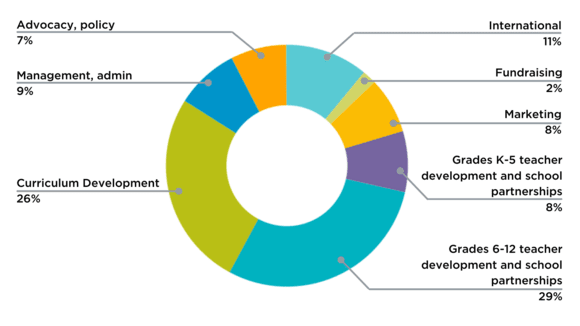
The table below shows the total cost breakdown of our headline achievements since founding.
| Areas of effort / Achievements in 2013 - 2020 | Fully-loaded cost (including admin) |
|---|---|
| Diversity and Global Marketing: Hour of Code campaign, 1.1 billion served, reaching 20% of students globally. 49% female participation. | $16.1 million |
| Curriculum + Code Studio learning platform: ~330 hours of coursework created, 1.8M teacher accounts. 56 million student accounts. 46% female, 46% underrepresented racial/ethnic groups. | $35.6 million |
| Partnership + professional learning: 60 regional partners and 998 facilitators who have prepared over 113,000 new CS teachers across grades K-12. ($16.1M spent on grades K-5, $44.7M on grades 6-12.) | $66.5 million |
| Government affairs: Policies changed in 50 states, $176M in state budgets allocated to computer science. | $10.9 million |
| International: Translation of curriculum into 67 languages, support for 104 international partnerships. | $5.2 million |
| TOTAL SPENT (2013-2020) | $134.3 million |
Other reports
- See recent Code.org Statistics
- See the 2019 Annual Report
- See the 2018 Annual Report
- See the 2017 Annual Report
- See the 2016 Annual Report and 2015-16 Code.org Evaluation Report
- See the 2015 Annual Report and 2014-15 Evaluation Report
- See the 2014 Annual Report
Our generous donors
Code.org® is dedicated to the vision that every student in every school should have the opportunity to learn to computer science. We are supported by philanthropic donations from corporations, foundations, and generous individuals. Code.org is a public 501c3. All donations to Code.org are tax-deductible.
Diamond Supporters ($10,000,000+ all-time contribution)
|
|
|
|
|
|
Platinum Supporters ($3,000,000+ all-time contribution)
|
|
|
|
|
Ali and Hadi Partovi |
|
|
|
|
|
Gold Supporters ($1,000,000+ all-time contribution)
Silver Supporters ($500,000+ all-time contribution)
|
|
|
|
|
Mark Cuban |
|
|
|
|
|
|
Bronze Supporters ($100,000+ all-time contribution)
Supporters ($25,000+ all-time contribution)
View all other supporters